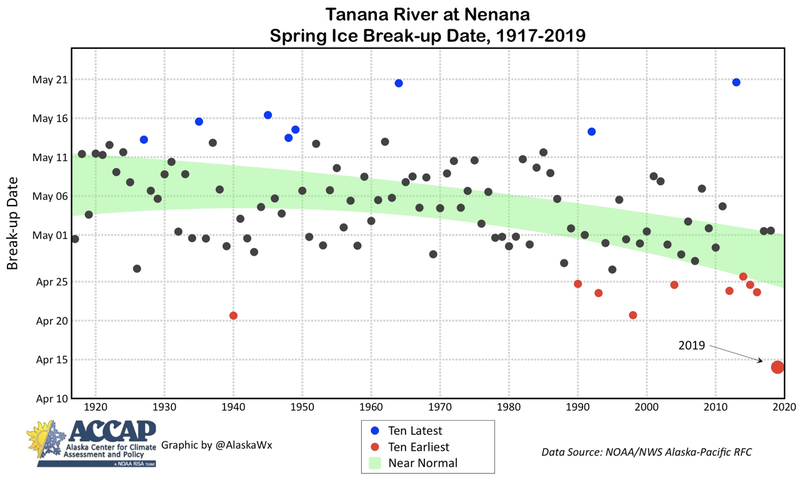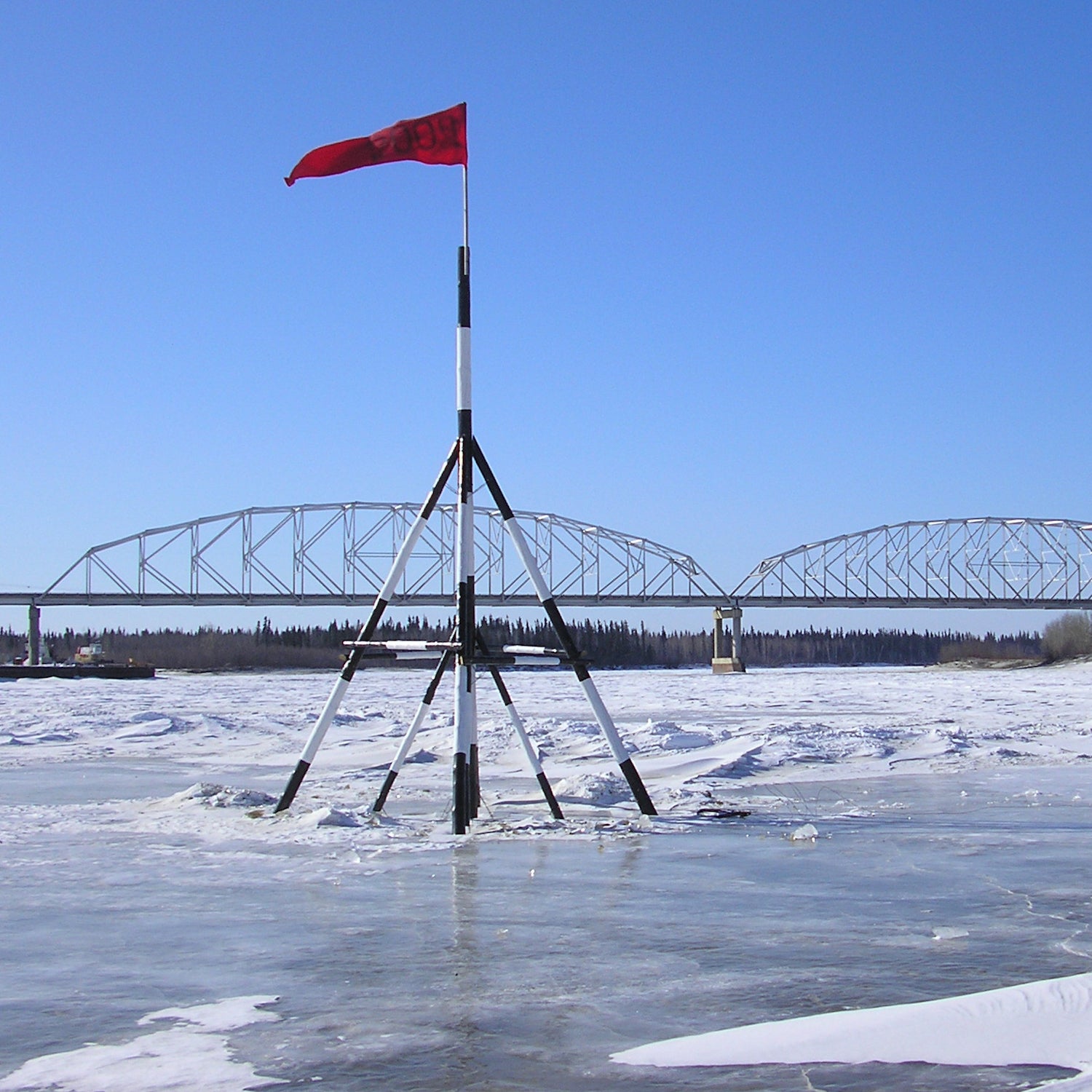The most talked about ice in the United States is a living-room-size��patch of the Tanana River in Nenana, Alaska, 300 feet from the shore.
At , a wooden tripod will be embedded in that ice, and over the next month, tens of thousands of Alaskans will��place their bets on when it will melt.��Tickets cost .��Last year��the pot was .��
The Nenana Ice Classic is one of the oldest continuously running betting events in the United States. It officially began in 1917, when a handful of railroad engineers decided to bet on the ice breakup to help pass the long Alaskan winter. They likely modeled it after the nearby Chena Ice Classic in Fairbanks, which began in 1903, as both a source of entertainment and a way to stay vigilant—at the time, spring melt on the Chena River meant chunks of ice crashing downriver, causing flooding and taking out bridges. (The Chena was dammed to control flooding, and the Chena Ice Classic was discontinued around that time.)
While steep winnings incentivize locals to tune in to the Nenana Ice Classic, scientists have another reason: for all its quirkiness, the event��is a valuable source of climate data.��
For one thing, the method of measurement has been incredibly consistent from year to year, says Rick Thoman, a climate specialist��with the Alaska Center for Climate Assessment and Policy, a division of the University of Alaska Fairbanks that specializes in climate research and education. The tripod is always 26 feet tall and made of spruce. It’s always planted in the same spot. And the records are accurate—the tripod is hooked up to a��clock at the end of a 100-foot length of rope. When breakup carries the tripod to the end of its tether, the clock stops, and contest officials record the exact minute. Whoever guesses the closest minute wins; multiple guesses on the same minute get a split prize.��Usually, breakup occurs within the last two weeks of April.

Nenana’s remoteness—it’s 56 miles west of Fairbanks—further insulates the experiment from variation. The single-channel river has never been dammed, and the town population hasn’t grown much since 1917 (today it hovers around 450). “It’s almost as perfect a climate record as you could get,” says Thoman.��
Despite his deep knowledge of Alaskan meteorology, snowpack, and climate trends, Thoman says he’s never played the Nenana Ice Classic in his 32 years as an Alaskan resident. Because betting closes weeks before breakup begins, there’s a lot of room for unexpected weather events, he explains. A single warm spell or snowstorm could throw off even the best mathematical models. “Guessing the nearest minute is total luck,” Thoman says.
There are plenty of locals who would disagree. Fairbanks resident Tom Waters is one of them—he’s won the Nenana Ice Classic ��and the Chena Ice Classic once.��
Waters, a retired mental-health technician, says playing the classic is just a hobby, but it’s a pretty involved one. His calculations factor in all kinds of data, which he gathers from drilling ice along the Tanana River, watching the water table, and measuring the effects of wind on snow moisture. He also monitors the train schedule, which he believes can cause vibrations that affect breakup. (Thoman, however, doubts this.)
“It’s very complex,” Waters says. “I have to take everything into consideration.”��
He narrows down his breakup estimate to a single day, then buys up to 1,000 tickets to cover as many minutes as possible. In the years he plays, Waters spends an estimated 2,000 hours making observations and calculations. He says he only bets on leap years, because he needs the extra day. True to form, he’s betting this year, though he’s keeping his predictions to himself.
Today��the Nenana Ice Classic is a nonprofit charitable gaming organization that funds scholarships, kids’ sports teams, medical charities, and other local causes. It’s owned by the community and operated by a board of directors. On the ground, it’s run by two employees: event manager Cherrie Forness��and one administrative assistant, Teresa Mayrand.
Forness has worked the event for the last 24 years. This year she’s already driven 2,000 miles in her 2004 Dodge Durango, delivering bright-red ticket-collection cans to gas stations, liquor stores, pubs, and groceries all over the state. She even��hands off some cans to bush-plane pilots, who deliver them to��Alaskan villages where roads don’t go.��
While Forness is against the idea of a state-imposed lottery, something that’s currently under discussion in Alaska, she says the Nenana Ice Classic provides the fun of a gaming tradition without unfairly targeting or overcharging lower-income residents. She bets every year.��
“I usually guess a date��and then use my grandkids’ birthday as the time,” she laughs. “It’s all luck.”
While tickets can only be submitted in Alaska due to gaming regulations, anyone can bet via mail. Simply send in $2.50 and��a time prediction, and an Ice Classic representative will fill out a ticket for you.
Last year’s breakup , the earliest on record.��
“It wasn’t just earlier by three hours, either. It was the earliest by over six days,” Thoman says. “But the larger significance, of course, is the pattern that that fits in. Five of the ten earliest breakups have occurred since 2010—in a century-long record. It’s hard to argue with that data.”
Thoman says��that,��statistically, another super-early breakup isn’t likely this year. The Alaska interior has had a cold winter so far, but between now and early April, anything could happen. His best advice: just don’t guess the Fourth of July.


